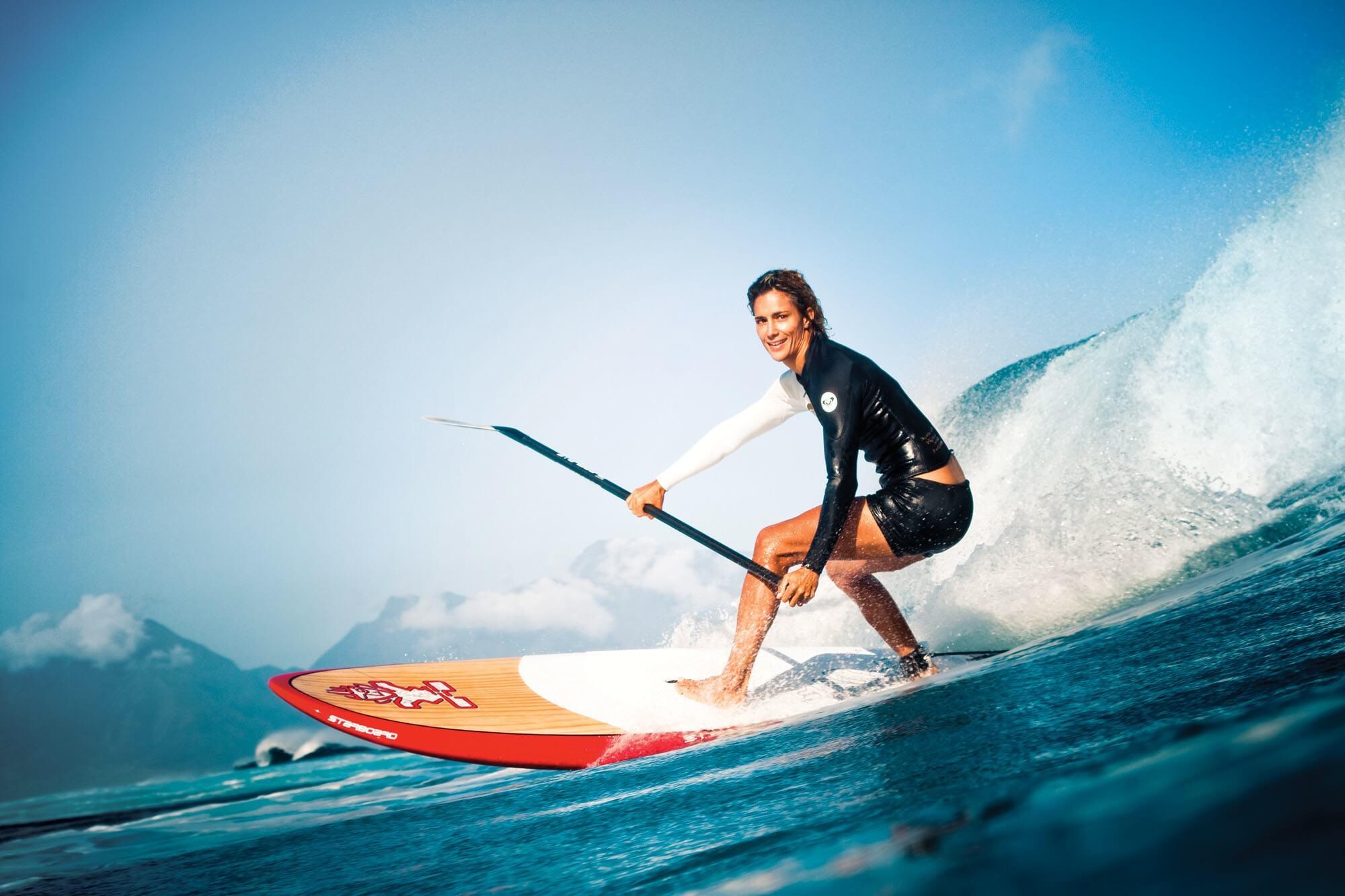Mastering Balance: Unveiling the Art and Science of Stand Up Paddleboarding

Stand Up Paddleboarding (SUP) is not just a recreational activity but also an art form that requires mastering balance both physically and mentally. It's a unique experience that blends the tranquility of being on the water with the physical challenge of maintaining stability on a board. In this guide, we'll delve deeper into the intricacies of mastering balance in Stand Up Paddleboarding, exploring the physical techniques, mental focus, core strength, and mindfulness that contribute to achieving harmony on the water.
Physical Techniques for Balance
Achieving balance on a Stand Up Paddleboard begins with mastering fundamental physical techniques. Start by finding your center of gravity and distributing your weight evenly on the board. Keep your feet shoulder-width apart and knees slightly bent to maintain stability. Engage your core muscles to support your posture and make subtle adjustments to your stance as needed to respond to changes in water conditions. Practice shifting your weight from side to side and front to back to maintain equilibrium as you paddle.
Mental Focus and Concentration
Balance in Stand Up Paddleboarding isn't just about physical techniques; it also requires mental focus and concentration. Clear your mind of distractions and focus on the present moment as you paddle, allowing yourself to become fully immersed in the experience. Visualize yourself gliding effortlessly across the water, feeling the rhythm of each paddle stroke and the gentle sway of the board beneath you. Cultivate a sense of mindfulness and awareness of your surroundings, allowing you to anticipate changes in the water and adjust your balance accordingly.
Building Core Strength
A strong core is essential for maintaining balance and stability on a Stand Up Paddleboard. Incorporate exercises that target your core muscles, such as planks, crunches, and Russian twists, into your fitness routine to improve your balance and paddle performance. Strengthening your core will not only enhance your ability to stay upright on the board but also improve your overall paddling technique and endurance. Consistent core training will help you build the strength and resilience needed to tackle challenging water conditions and extend your paddling adventures.
Mindfulness and Connection with Nature
Stand Up Paddleboarding offers a unique opportunity to connect with nature and cultivate a sense of mindfulness on the water. Embrace the serenity of your surroundings as you paddle, listening to the sounds of the water, feeling the warmth of the sun on your skin, and observing the beauty of the natural world around you. Allow yourself to let go of stress and distractions, immersing yourself fully in the present moment and embracing the sense of freedom and peace that comes with being on the water.
Pushing Boundaries and Embracing Challenges
Mastering balance in Stand Up Paddleboarding is an ongoing journey of self-discovery and growth. Push yourself to explore new challenges and expand your comfort zone, whether it's paddling in rougher water conditions, trying new maneuvers, or embarking on longer expeditions. Embrace setbacks and failures as opportunities for learning and improvement, knowing that each experience will strengthen your skills and deepen your connection to the water. With dedication, perseverance, and a willingness to embrace the unknown, you'll unlock new levels of balance and mastery in Stand Up Paddleboarding.
Conclusion
Stand Up Paddleboarding is more than just a recreational activity; it's a transformative experience that challenges both body and mind. By mastering physical techniques, cultivating mental focus, building core strength, and embracing mindfulness, you can achieve harmony and balance on the water. Whether you're gliding across calm lakes, riding waves along the coast, or navigating challenging river rapids, Stand Up Paddleboarding offers endless opportunities for personal growth, connection with nature, and exploration of the self. So grab your board, paddle out, and embark on a journey of balance, mastery, and adventure on the water.
- Art
- Causes
- Crafts
- Dance
- Drinks
- Film
- Fitness
- Food
- Games
- Gardening
- Health
- Home
- Literature
- Music
- Networking
- Other
- Party
- Religion
- Shopping
- Sports
- Theater
- Wellness
- IT, Cloud, Software and Technology


